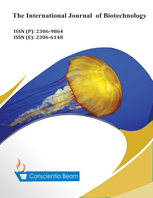Eco-Friendly Use of Fly Ash for the Management of Root-Knot Nematode and Acid Rain in Pumpkin Crop
DOI:
https://doi.org/10.18488/journal.57.2019.81.93.103Abstract
Fly ash (FA) production has stridently been due to unjudicious demand of electricity for fulfilling the human needs. Generation and disposal of FA has been a serious concern in the current scenario. However, FA can be used for soil amelioration that may improve physical, chemical and biological properties of the degraded soils. Simulated acid rain was prepared by adding the HNO3 and H2So4 in the ratio 3:1 and maintained the different pH levels (5.0, 4.0 and 3.0). In the present study, a pot experiment was conducted in net house during 2017-18 to evaluate the efficacy of fly ash for the alleviation of simulated acid rain (SAR) stress on pumpkin (Cucurbita moschata) with or without root-knot nematode, Meloidogyne incognita inoculations. The result indicated that the different growth, yield, biochemical variables of Cucurbita moschata were significantly (P≤0.05) enhance at 30% FA amended soil with lower level of SAR (pH5.0) and reduced the nematode population . After 30% of FA (40% and 50%) and all the levels of SAR (pH5.0, pH4.0 and pH3.0) were harmful to the plant growth, yield and, biochemical parameters and also reduce the nematode population as compared to control. From the result it appeared that the best level of fly ash was 30% with pH 5.0 of simulated acid rain, where lowest level of acidity (pH5.0) showed no harmful effect. However, in case of root-knot nematode the suppression was showed at all the levels of fly ash and simulated acid rain like in terms of root gall, soil population and eggmass.

